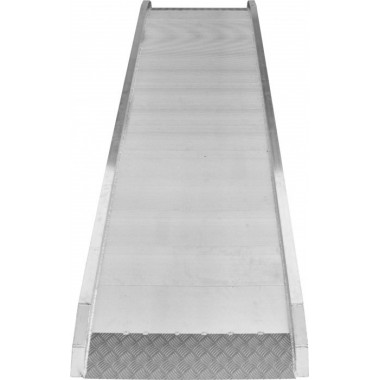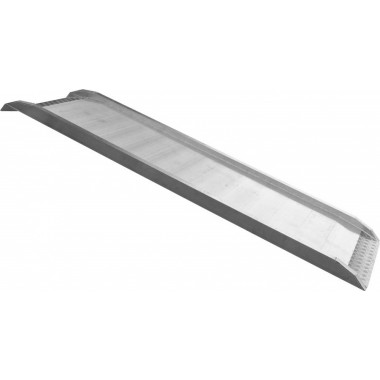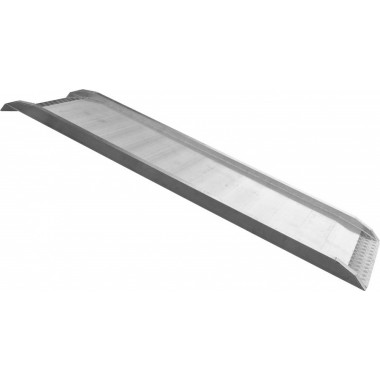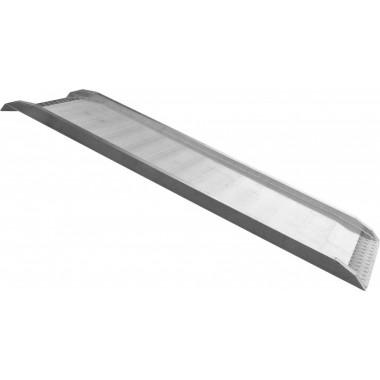Loading ramps
At PS STAGE, we understand that preparing a successful event or concert depends largely on the logistics and equipment used. Loading ramps are one of those key elements that, although sometimes ove...rlooked, are essential to ensuring all the necessary equipment arrives at its destination safely and efficiently.
Read more
What is a loading ramp?
A loading ramp is an inclined structure that facilitates the movement of heavy equipment, such as speakers, lights, and stage structures, from a lower level to a higher level, or vice versa. In the context of events and stages, these ramps allow equipment to be transported from freight vehicles to the stage, and vice versa, without the need to manually lift heavy objects, reducing the risk of injury and damage to equipment.
What size loading ramp do I need?
The size of the loading ramp you need depends on several factors, including the type of event, the height of the stage, and the equipment you plan to move. At PS STAGE, we recommend considering the following:
Height of the stage or platform: One of the first considerations is the difference in height between the starting point and the destination. If the stage is 1 meter above the ground, the length of the ramp should be sufficient to provide a safe angle of inclination, usually between 10 and 15 degrees.
Weight of Equipment: The weight of the equipment you plan to move will determine the strength and capacity of the ramp. Our ramps are designed to support heavy loads, so we always recommend choosing a ramp with a load capacity greater than the total weight of the heaviest equipment that will be moved.
Available space: Make sure there is enough space at the event location to accommodate the length and width of the ramp. Longer ramps offer a gentler incline, but also take up more horizontal space.
In general, for medium to large events, we recommend ramps with a minimum length of 3 meters and a width of 1 meter, to ensure that any equipment can move easily and safely.
How many types of loading ramps are there?
In the world of loading ramps for events and stages, there are several options available, each designed for different needs. At PS STAGE, we have identified the following main categories:
Fixed ramps: These are ramps that are permanently or semi-permanently installed in a specific location. They are ideal for settings that do not move frequently and for recurring events in the same location.
Mobile or portable ramps: These ramps are designed to be easy to transport and set up. They are perfect for traveling events or for situations where flexibility is needed. They are usually light but robust, and many of them are foldable for easy transport.
Telescopic ramps: These ramps can be adjusted in length to adapt to different heights and spaces. They are extremely versatile and are an excellent option if you need an adaptable solution.
Modular ramps: Composed of several sections that can be assembled in different ways, these ramps allow you to create personalized configurations according to the specific needs of the event. They are ideal for complex scenarios or unconventional configurations.
Hydraulic ramps: Equipped with hydraulic lifting systems, these ramps can be easily adjusted in height, making them ideal for scenarios where the height of the loading point varies.
What should loading ramps be like?
Safety is our priority at PS STAGE, and we understand that a well-designed loading ramp is crucial for the protection of people and equipment. Here we tell you some essential characteristics that loading ramps for events and stages must have:
Proper incline: The incline of the ramp should be gentle enough to allow safe loading and unloading of heavy equipment. An inclination of between 10 and 15 degrees is ideal. If the slope is greater, it may be necessary to use ramps with non-slip surfaces or additional safety mechanisms.
Non-slip surface: The surface of the ramp must be non-slip to avoid accidents, especially in wet conditions or when handling heavy equipment. At PS STAGE, our ramps are equipped with high-quality non-slip surfaces to ensure safety at all times.
Resistance and durability: Ramps must be built with high-resistance materials, such as aluminum or steel, to support the weight of the equipment and resist wear over time. At PS STAGE, all our ramps undergo rigorous quality testing to ensure their durability and reliability.
Ease of assembly and disassembly: The speed and ease with which a ramp can be installed and dismantled is crucial in the context of events and concerts, where time is a valuable resource. Our mobile and telescopic ramps are designed to be installed in minutes, without the need for specialized tools.
Load capacity: It is essential that the ramp can support the weight of the equipment that is going to be moved. As a general rule, we recommend selecting a ramp with a load capacity greater than the weight of the heaviest equipment you plan to transport. This not only ensures safety, but also extends the life of the ramp.
Benefits of using loading ramps at events and stages
Loading ramps are not only a practical accessory, they also offer a number of benefits that can significantly improve the logistics and safety of an event:
Efficiency in loading and unloading: They facilitate the mobilization of heavy equipment, allowing loading and unloading processes to be faster and less costly in terms of labor.
Reduced risk of injury: By minimizing the need to manually lift and move heavy equipment, ramps help prevent injuries to staff, which is crucial in any work environment.
Equipment protection: A well-designed ramp reduces the risk of equipment damage during loading and unloading, which can be particularly important when handling expensive or delicate equipment.
Versatility and adaptability: Portable and modular ramps can adapt to a variety of situations and environments, making them a valuable tool for any event.
Regulatory compliance: In many cases, the use of ramps is necessary to comply with workplace safety and accessibility regulations. Having proper ramps not only improves safety, but also ensures that your event complies with local laws.
How to choose the ideal loading ramp for your event?
Choosing the right loading ramp for your event may seem complicated, but with the right information, you can make an informed decision that perfectly suits your needs. Here are some tips based on our experience in PS STAGE:
Evaluate the event environment: Consider the height of the stage, the floor area and any other relevant factors. This will help you determine the type and size of ramp you need.
Consider the type of equipment: Make sure the ramp you choose can support the weight and size of the equipment you plan to move. Consider not only the individual weight of the objects, but also how often they will be moved.
Think about logistics: If your event is traveling, a portable or telescopic ramp may be the best option. If it's a fixed event, a modular or fixed ramp could offer the stability you need.
Ask the experts: At PS STAGE, we are here to help you choose the perfect loading ramp. Our team of experts can advise you every step of the process, from selection to installation.
Loading ramps for events and stages are a fundamental piece of logistical equipment that can make the difference between a successful event and one plagued by problems. At PS STAGE, we are proud to offer the highest quality ramps, designed to meet the demands of any type of event, from small concerts to large productions.
With our extensive experience and knowledge, we are confident that we can help you find the perfect solution for your needs. Don't leave the logistics of your event to chance; trust the experts at PS STAGE to ensure everything goes as planned. Contact us today for more information and find out how we can help you take your event to the next level!
If you are interested in equipment for events and concerts you may also be interested in visiting our industrial hinges section, industrial adhesive tapes or our tie straps.


















